 Why don't tornadoes hit cities more often?
Why don't tornadoes hit cities more often?Joshua Wurman, president of the Center for Severe Weather Research in Boulder, Colo., whips up a response.
The glib answer for why tornadoes don't strike urban areas that often is: Cities are small.
If you take a look at Google Maps and see what percentage of the U.S. urban and suburban areas cover, it's a pretty small fraction. The regions where you have peak tornado frequencies—from Texas up through Kansas, and even east toward Atlanta and the Southeast—are open country, so that's where most tornadoes spend the overwhelming fraction of their lifetimes.
It's very rare that one encounters a city, as happened in Atlanta last weekend. In 1999 there was a tornado that hit Oklahoma City and killed about 40 people. It was a long-track tornado that lasted about an hour—but most of its lifetime was spent over pretty open country. It crossed two subdivisions, and that's where most of the fatalities happened.
The Atlanta twister has not been characterized as a violent tornado. Tornadoes are rated using the Enhanced Fujita (EF) Scale, which scores the damage caused by a particular twister on a scale from 0 to 5. Violent tornadoes are classified as EF4 and EF5, significant ones EF2 and EF3. EF5 damage is typically quite catastrophic: Houses are not only just destroyed but destroyed down to their foundation—no walls left standing--and the tornado might cause structural damage to larger, well-engineered buildings that are designed to survive even very intense winds. The tornado that went through Atlanta, although it broke lots of windows, didn't cause major damage to any downtown buildings. I believe that tornado has been rated an EF2.
As to whether global warming will increase the number of tornadoes—making it more likely that they will encounter cities—we have no clue.
Climate change predictions are uncertain, even on a global scale. One could be confident that the global temperature is going to go up; however, the error ranges on what's going to happen locally—whether the temperature is going to go up in Atlanta, or here in Boulder—are much wider.
In the case of hurricanes, there's a reasonable, if unproved, hypothesis that the storms might get more intense if global temperature rises and the surface temperature of the earth's oceans rises—after all, in terms of the physics, warm water is key to creating a hurricane. With tornadoes, you can't even make that basic statement because the effect of an increase in local temperature on tornado frequency or tornado intensity is unclear. Brazil is pretty hot, but it doesn't have a lot tornadoes. Oklahoma and Texas are really hot in July and August, but that's not the peak of their tornado season; spring is when those states see the most tornadoes.
So it is possible that climate change could shift the tornado season to earlier in the year as spring creeps into winter. Perhaps it will move the distribution of where the stronger tornadoes occur. A warming climate does not necessarily make for more tornadoes; it could cut off tornadoes completely or could cause their incidence to double.
WEATHER NOTE
Brad Baumgardner of Indiana Dunes State Park showing the Boy Scouts how the parks department starts controlled burns.
Coast Guard struggles with homeland security
The Coast Guard is struggling to meet its homeland security missions in addition to its traditional missions, according to a new report from Homeland Security Inspector General Richard Skinner.
“The Coast Guard continues to experience difficulty in meeting its homeland security performance goals,” the report states.
The Coast Guard did not meet performance goals for two of its homeland security missions in fiscal 2006, the most recent year studied. The unmet goals were defense readiness, which it failed to meet for the sixth year in a row, and interdiction of illegal migrants, which it failed to meet in four of the six years surveyed, the report states.
The Coast Guard blamed the shortcomings on its aging cutter fleet, which sometimes made too few boats available for use. In the case of defense readiness, it also blamed limited time for training.
Setbacks related to the Coast Guard’s $24 billion Deepwater asset modernization program, which has encountered delays, cost increases and rejection of new assets because of structural problems, have contributed to the difficulties in maintaining a ready fleet, the inspector general said.
The Coast Guard is continuing to face difficulties in Deepwater, including problems with the Fast Response Cutters, the report states. The report also notes that the Rescue 21 program “ has been “plagued by delays, technical problems, cost escalation and a delay in full implementation, which has slipped by five years.”
Among its traditional missions, the Coast Guard failed to meet its performance measure for marine safety. It came very close to — but technically did not achieve — performance benchmarks for search and rescue, protecting marine resources, and aids to navigation. The inspector general said those were mostly technicalities, and the benchmarks themselves were imperfect.
The Coast Guard’s Deepwater and Rescue 21 programs have been among the largest contracting programs in the Homeland Security Department. The programs include not only ship construction but also acquisition of and integration electronics and computer equipment and software.
Slow going prevails in shipping season start
By JACK STOREY
ST. MARYS RIVER - Shipping traffic up and down the St. Marys River continued intermittently through the traditional first day of the season Tuesday.
Ships in the river overnight hove-to or tied up where they were to await daylight and the resumption of icebreaker escorts, starting with two thousand-foot self unloaders making the first downbound trips of the season.
Coast Guard operations manager Mark Gill said the 1,000-foot Indiana Harbor and Edwin H. Gott opted to lay over the nighttime hours at the Soo Locks pier wall after locking down late Tuesday. Gill explained that while the commercial ships waited, two Bay-Class tugs completed the initial opening of the often-troublesome West Neebish Channel in preparation for the two wide-bodied vessels due down early today.
He said Coast Guard ice escorts are suspended during nighttime hours because of very limited visibility and safety concerns. However, an extra hour of daylight in the evening and a bright moon overnight aided the tugs Katmai Bay and Biscayne Bay in their joint channel-clearing operation at West Neebish.
Downriver of that passage on the upbound side, a cluster of four ships waited in the ice overnight at Mud Lake before resuming their first upbound passages of the season in heavy ice conditions. Stewart J. Cort, James R. Barker, Algorail and Canadian Transfer were all expected to get underway early today after waiting out the night in the ice.
Gill expressed some worry about the West Neebish Channel, even though the wide, powerful thousand footers are ideal vessels to attempt first passages through the ice-congested channel. “We'll see how it goes,” Gill said of the often ice-choked West Neebish.
Gill said he also expects ice trouble later a short distance downriver at two other traditional choke points - the Moon Island turn, Winter Point an in Mud Lake itself.
Addressing traffic in the other direction, Gill said he expects ice trouble off Stribling Point, where the upbound channel turns sharply around the northern end of Neebish Island.
Above the Soo Locks, downbound shipping traffic seemed to be moving well enough early today. The Canadian vessel CSL Laurentian followed the two thousand footers downbound shortly after daybreak today. Despite a westerly wind that tends to pack broken ice into Whitefish Bay, two vessels - John J. Munson and Algoville - were reportedly making way downbound at various points on Whitefish Bay.
On the Straits of Mackinac, the steamer Philip R. Clarke was reportedly beset in the ice there. With St. Ignace-based Biscayne Bay otherwise occupied on the St. Marys, Gill said he hopes incoming shipping traffic on the Straits will free the stranded Clarke without pulling a tug off the lower St. Marys.
Eventually, he said he hopes to have the Bay-Class tug Mobile Bay available from Green Bay to stand in on the Straits.
The site of a ferry-stopping ice jam on Monday and early Tuesday, the Sugar Island ferry crossing cleared of ice from ship traffic and a shift of the wind late in the day on Tuesday. Ferry service back and forth to Sugar Island and Sault Ste. Marie was suspended for several hours at a time on Monday and early Tuesday.
Gill made it a point to publicly thank the US Army Corps of Engineers for assigning the Corps tug Owen Frederick to ice-clearing efforts around the Sugar Island ferry crossing. Frederick worked in tandem with the larger Katmai Bay in the tedious work of breaking up the ice jam that idled the ferry Sugar Islander II.
Gill said the loan of the Frederick was emblematic of a close working relationship between Corps and Coast Guard. The extra icebreaking tug came in very handy in the close-clearance Sugar Islander passage at Mission Point, Gill said, repeating his thanks to the Corps of Engineers.
The Coast Guard official held out some hope that additional icebreaking help will become available from farther west as the struggle with heavy river ice continues. He said at breakout, the Coast Guard can usually count on at least three Bay-Class tugs for the ice-choked lower St. Marys. However, heavy ice at Green Bay, Port Huron and at several ports on Lake Erie tied up available icebreaking vessels just as the river began to clog this year.
More a matter of ice clearing that ice breaking, the job at hand is one of influencing broken channel ice to flow downriver more easily. Or, as Gill put it, “... Breaking big chunks of ice into smaller ones.”
He suggested the going will be slow for early season shipping until several big vessels have cleared the St. Marys in both directions over coming days. He said the weather - always a major player in ice season - appears to be somewhat favorable with gradually moderating winter temperatures in the forecast.
Well aware that more ice trouble is always possible before the thaw sets in for good, Gill said, “We're not out of the woods yet.”
Ships that ply the lakesPosted By Skip Gillham
Calumet, a former member of the Grand River Navigation fleet, rests in the outer harbour at Port Colborne. The ship was sold to International Marine Salvage in November following a minor accident at Cleveland. The laker is waiting its turn at the scrapping berth.
This vessel was one of the oldest, and many say one of the best looking, ships on the Great Lakes. It dates from 1929 and originally sailed for U.S. Steel as the Myron C. Taylor.
The 185.85-metre long steamship operated in the ore and coal trades and had a three-tiered pilothouse to provide extra accommodations for corporate guests.
U.S. Steel had the Myron C. Taylor converted to a self-unloader in 1956 and it was transferred to its Bradley Transportation division for work as a limestone carrier. With the development of taconite ore pellets, the ship experimented with an early delivery of this cargo and was a success.
A Nordberg diesel engine replaced the original triple-expansion steam plant in 1968 and this, along with its self-unloading abilities, led to the prolonged 78-year career.
While most of the ship's service was on the upper four great Lakes, Myron C. Taylor came through the Welland Canal on Dece. 1, 1983, with sand for Hamilton. It also called at Port Colborne to load stone in 1987 and brought salt to a Lake Ontario destination in 1998.
The ship joined Grand River Navigation as Calumet in 2001, and occasionally returned to the Niagara area. It is shown at Sarnia on May 17, 2005, in a photo by Marc Dease.
Age, plus extensive use in the salt trade, led to a decision to retire the vessel at the end of 2007. However, when the ship was damaged hitting a dock at Cleveland on Nov. 15, 2007, it was sold for scrap rather than make repairs for another few weeks of service. Calumet arrived at Port Colborne on Nov. 19 and, after the remaining fuel had been pumped out, the ship was towed to the scrap berth the next day.
RS
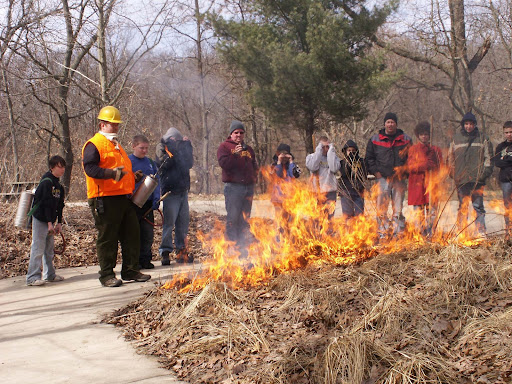
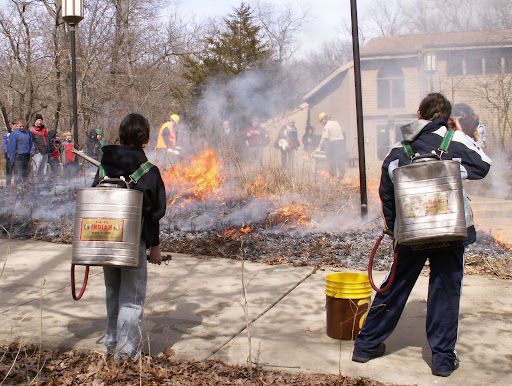


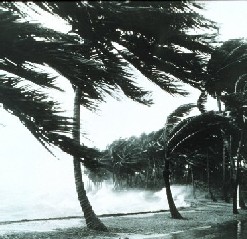
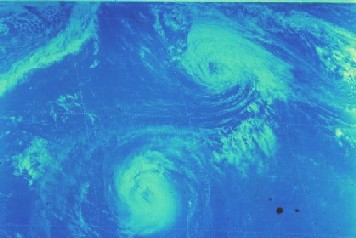






































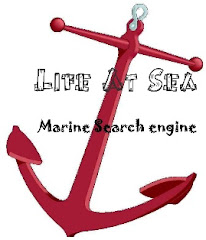






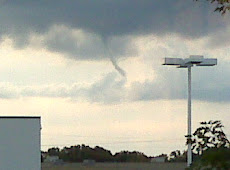






















































![Validate my RSS feed [Valid RSS]](valid-rss.png)